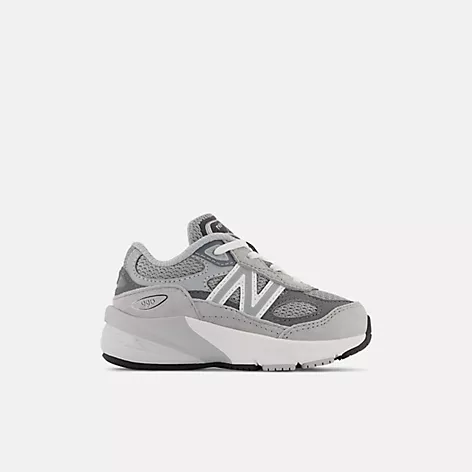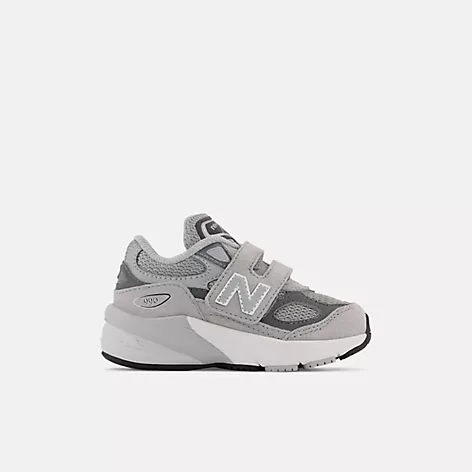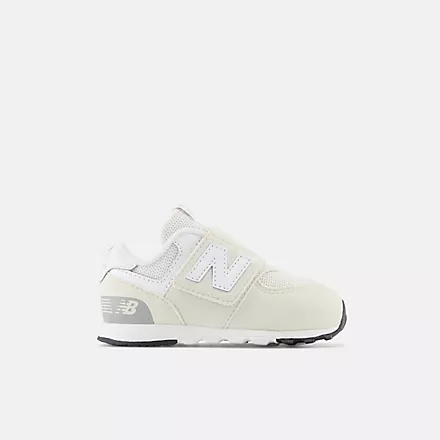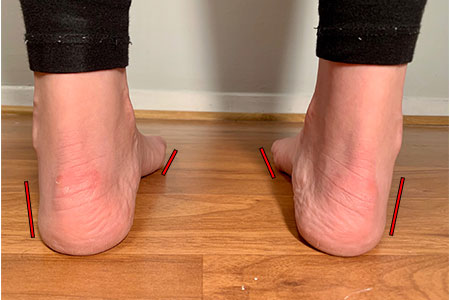Preventing Intoeing in Toddlers with Supportive Shoes
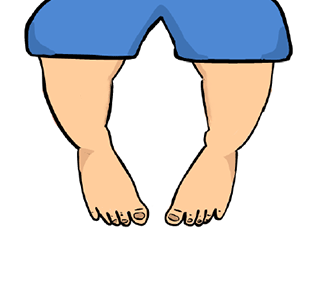
Intoeing, sometimes referred to as “pigeon toes”, is a condition where a child’s feet turn inward when walking or standing. This condition commonly begins in infancy and, in some cases, resolves naturally as children grow. But sometimes, it does linger and can lead to challenges down the road such as balance issues, coordination, and walking speed. Supportive shoes play a key role in preventing long-term complications as they can help guide your child’s foot growth in a more natural position and improve your child’s walking gait. Preventing intoeing in toddlers with supportive shoes is an effective and cost-efficient approach.
The Proactive Approach: Early Treatment for Intoeing
Expert opinions from medical professionals such as pediatric orthopedists differ, as some of them recommend taking early action while others recommend waiting and monitoring how the condition progresses. Does the image below look familiar? Parents are usually pretty good at noticing when something is off about their children. While some variation in gait is normal, consistent intoeing might warrant a closer look.
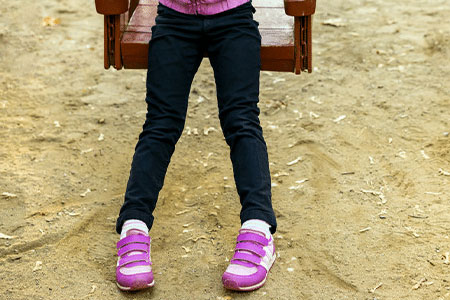
I want to emphasize the significance of early detection and the potential benefits of corrective footwear. The earlier you identify this condition, the easier it will be to manage. While intoeing can rectify itself over time, proactive steps with the right shoes can provide peace of mind and foster optimal foot development.
Choosing the Right Shoe: How Supportive Footwear Improves Foot Posture
Let’s take a look at a toddler with intoeing standing barefoot and wearing a pair of supportive shoes that I recommend.
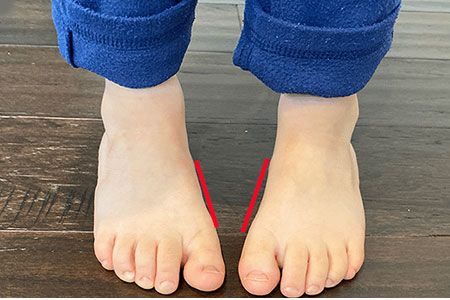
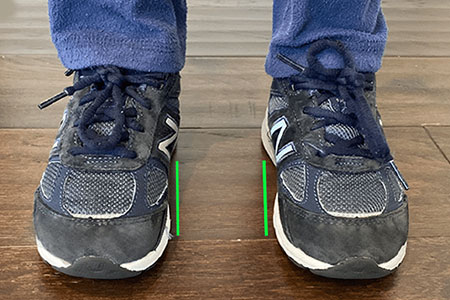
The point is, waiting is not your best strategy. Being proactive means less chance of complications and orthopedic issues later on. Fitting your toddler in the correct pair of shoes means giving your toddler the best start possible.
The Significance of Expert Shoe Fitting for Toddlers
When it comes to your toddlers’ growing feet, guesswork just won’t cut it. Just like professional advice matters in healthcare, the same level of expertise is crucial when fitting shoes for children. I have been working for a specialized children’s shoe store for over 10 years, fitting children for supportive shoes and orthotics.
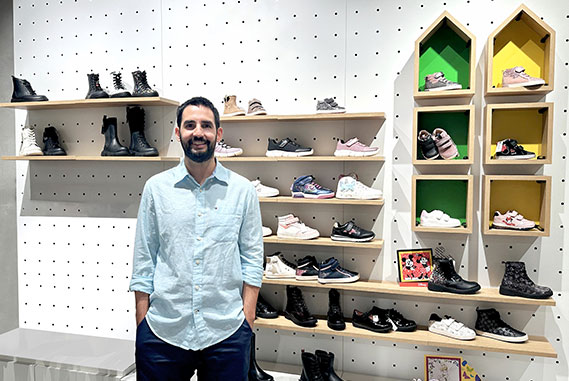
Imagine taking a child to a store where the focus is sales rather than foot health. A salesperson may offer a shoe that looks good and fits within a budget, but may not consider the specific needs of your child’s foot structure, especially one with intoeing.
A credible shoe fitter, on the other hand, comes with a skill set tailored to assess a child’s unique foot needs. At the shoe store where I work, we take the time to measure each foot meticulously, account for the quirks of growing feet, and recommend footwear that promotes healthy development. After I am done measuring and fitting the child for shoes, I proceed to take the child to the hallway to watch him or her walk and run.
Parents should come prepared when visiting a professional fitter. I suggest making a checklist of questions to ask, such as specifics about support features and how the shoe works to address intoeing.
4 Key Features Your Toddler’s Shoes Must Provide
The right footwear can offer substantial benefits, encouraging proper foot alignment. The correct types of shoes can act almost like a brace or an orthotic, but it shouldn’t replace them if your child has been diagnosed with one.
My goal is to provide you with specific shoe recommendations that don’t restrict your toddler’s feet but help guide them into a natural position during their critical formative years. The shoes I recommend provide 4 key features that make them ideal for toddlers with intoeing:
1️⃣ Firm heel counters help stabilize the heel and allow for natural movement at the toes, which can discourage intoeing. Press on the back part of your toddler’s shoes to check whether they provide firm heel counters or not:

2️⃣ Stable base of support with adequate arch support to help improve your toddler’s foot posture and stability. Press on the middle part of the outsole of the shoe and make sure that it feels firm:

3️⃣ Straight lasts to help improve your toddler’s foot posture and walking gait. Stay away from shoes that have excessively curved lasts as this can only aggravate the condition:

4️⃣ Lightweight and flexible to help prevent your toddler’s feet and legs from easily getting tired. It’s not just about the support that your toddler’s shoes provide; it’s also their job to offer flexibility where it’s needed. A shoe that’s too rigid won’t let the foot develop muscle strength and dexterity. On the other hand, a shoe that’s too flexible may not provide the guidance necessary to correct intoeing. Your toddler’s shoes should bend at the toes but no further.
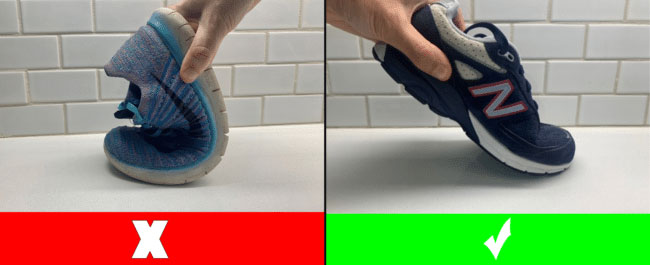
Top Supportive Shoe Picks for Toddlers: My Specific Shoe Recommendations
When you have a toddler with intoeing, finding the right shoes isn’t just about picking the cutest pair, it’s about combining fit with the crucial function of support. Let’s talk about specific shoes that meet these needs. Disclosure: Some links in this post may be affiliate links and we may receive a small commission (at no extra cost to you) when you click our links and make purchases.
Lace-Up Closure
- New Balance shoe style 990v6
- Fits toddlers with medium, wide, or extra wide feet
- Strong rubber outsole and cushioned midsoles
- Suede/mesh upper provides durability and breathability
- Order this shoe half a size larger than your toddler’s current foot size
- New Balance shoe style 990v6
- Fits toddlers with medium, wide, or extra wide feet
- Strong rubber outsole and cushioned midsoles
- Suede/mesh upper provides durability and breathability
- Order this shoe half a size larger than your toddler’s current foot size
- Stride Rite shoe style Emilia
- Fits toddlers with medium, wide, or extra wide feet
- Strong rubber outsole and a cushioned midsole
- 100% leather made
- Order this shoe a whole size larger than your toddler’s current foot size
- Stride RIte shoe style Elliot
- Fits toddlers with medium, wide, or extra wide feet
- 100% leather made
- Seamless construction that cradles the foot’s natural shape
- Order this shoe a whole size larger than your toddler’s current foot size
- Stride RIte shoe style Elliot
- Fits toddlers with medium, wide, or extra wide feet
- 100% leather made
- Seamless construction that cradles the foot’s natural shape
- Order this shoe a whole size larger than your toddler’s current foot size
- New Balance shoe style 990v6
- Fits toddlers with medium, wide, or extra wide feet
- Suede/mesh upper provides durability and breathability
- Order this shoe half a size larger than your toddler’s current foot size
- New Balance shoe style 2022
- Fits toddlers with medium or wide feet
- Suede/mesh upper provides durability and breathability
- Order this shoe half a size larger than your toddler’s current foot size
- New Balance shoe style 990v6
- Fits toddlers with medium, wide, or extra wide feet
- Strong rubber outsole and cushioned midsoles
- Suede/mesh upper provides durability and breathability
- Order this shoe half a size larger than your toddler’s current foot size
Velcro Closure
- Timberland Tracks H&L Boot
- Fits toddlers with medium or wide feet
- Breathable textile lining
- Stable base of support with firm heel counters
- Order this shoe a whole size larger than your toddler’s current foot size
- Saucony Cohesion
- Fits toddlers with medium or wide feet
- Heel grid system for stable cushioning
- Compression molded EVA footbed for comfort
- Order this shoe a whole size larger than your toddler’s current foot size
- New Balance style 990v6
- Fits toddlers with medium, wide, or extra wide feet
- ABZORB midsole absorbs impact through a combination of cushioning and compression resistance
- Removable insoles
- Extra deep
- Order this shoe a half size larger than your child’s current foot size
- New Balance style 574
- Fits toddlers with medium, wide, or extra wide feet
- Generous toe box and instep to accommodate and support your toddler walker’s needs
- Rubber outsole pods designed to stand up to daily wear and tear
- Extra deep
- Order this shoe a whole size larger than your toddler’s current foot size
- Memo style Gabi
- Fits toddlers with medium or wide feet
- Thermoplastic asymmetric stiff heel counter for proper feet protection and stabilization
- Stiff and high ankle support for toe walkers
- Order this shoe half a size larger than your toddler’s current foot size
- Memo style Gabi
- Fits toddlers with medium or wide feet
- Thermoplastic asymmetric stiff heel counter for proper feet protection and stabilization
- Stiff and high ankle support for toe walkers
- Order this shoe half a size larger than your toddler’s current foot size
- New Balance style 990v4
- Fits toddlers with medium or wide feet
- Generous toe box and instep to accommodate and support your toddler walker’s needs
- Extra deep
- Order this shoe a whole size larger than your toddler’s current foot size
I also created different resources that help families of children with intoeing find seasonal shoes such as sandals or boots. I am working on putting together a resource that will show you which winter boots work best for children with intoeing.
Families Testimonials – Get Inspired!
Many parents and caregivers have observed positive changes in their toddlers’ walking patterns after making the switch to well-structured shoes. It’s not an overnight magic fix, but a consistent and thoughtful approach that sets the stage for healthier foot growth.



Maintaining the Support of Your Toddler’s Shoes
Ensuring the proper support doesn’t stop at the point of purchase. It’s essential that you undo the laces or velcro straps of the shoes before taking them on and off your toddler’s feet. This will help preserve the support and structure of the shoe.
Exploring Orthotics: Is It Worth the Investment?
In tackling intoeing, the big question I hear from parents is whether they should invest in orthotics. It’s a valid concern given the extra cost. I must emphasize, orthotics are not a universal fix for every child, but in some cases where the shoes are not correcting the issue, they can be incredibly valuable. I’ve seen instances where they’ve made a significant difference in a child’s gait and comfort.
If you already tried a pair of supportive shoes and your toddler’s balance and foot posture has not improved, then your toddler might be a candidate for orthotics. The correct types of orthotics can offer targeted support that shoes alone may not provide. Cost is a factor, and often, insurance does not cover these little wonders. There is a particular orthotic for intoeing that has worked really well for many children.
Remember that early intervention can make a significant difference. The bones in a toddler’s feet are still forming and are more malleable than at any other time in life. With the right support, you can guide their growth and potentially correct postural issues. Pediatric orthopedists back this up, emphasizing the benefit of supporting children’s feet during this crucial developmental stage.
Let me know if you have any questions or if you would like to recommend specific shoe recommendations based on your toddler’s foot shape. You can either contact me via email or through the comments section below.


